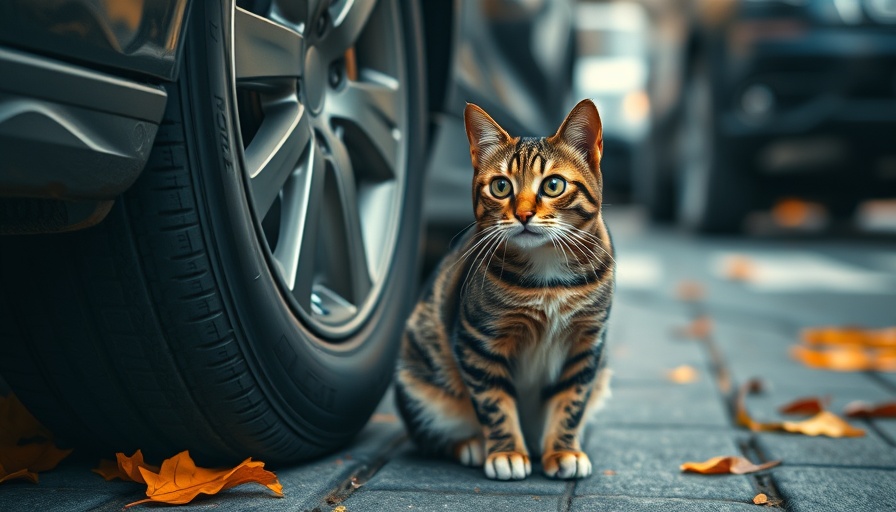
Unlocking Your Dog's Potential: The Power of Multi-Sensory Socialization
As pet owners, we all want our canine companions to thrive in varied environments. Multi-sensory socialization is the key to enhancing your dog's life, going beyond traditional training methods that focus solely on sight and sound. By engaging all five senses—sight, sound, smell, touch, and taste—you can help your dog build confidence and adaptability. This holistic approach not only enriches their world but also strengthens the bond you share.
Why Multi-Sensory Socialization Matters
Dogs are incredibly perceptive creatures, and they experience the world through their senses. Traditional socialization often falls short by neglecting important aspects such as textures, smells, sounds, and tastes. Integrating these elements into your dog’s training can result in a more well-rounded pet. Dogs who undergo multi-sensory socialization tend to be more confident, less anxious, and better able to cope with new inputs from their environment.
Textures: Expanding Paw Comfort and Confidence
The ground beneath your dog's paws can significantly affect their comfort level. Exposing them to various textures, such as grass, sand, and tiles, can prepare them for different environments they might encounter in life. Start with walks in parks, beaches, or urban settings. Gradually introduce your dog to different surfaces in your home, allowing them to walk on carpets, hardwood floors, and wet grass. Additionally, offering chew toys made of diverse materials can help them become comfortable with varied tactile experiences.
Smells: The World Through Their Nose
A dog's sense of smell is their most powerful tool for exploration. To maximize this, take your furry friend to different locations where they can encounter a variety of scents—parks, forests, markets, and city streets all offer unique olfactory experiences. You can also enhance this sensory journey by introducing your dog to new smells through pet-safe fruits, vegetables, and spices. Allowing them the freedom to sniff during walks encourages natural behavior and reduces stress.
Sounds: Building Resilience in Noisy Environments
Many dogs suffer from noise phobias that can lead to anxiety or fear. Gradually exposing your dog to different sounds—traffic, thunderstorms, or loud groups—can help them become accustomed to everyday noises. Consider playing recordings of various sounds at low volumes and gradually increasing volume. Visiting bustling areas can also help your dog learn to cope with the excitement and stimuli that comes with real-world environments.
Taste: Making Life Delicious
Offering a variety of treats can make your dog's life more exciting and satisfying. Dogs love to explore the world through taste, so keeping their palate interested is essential. You can offer an array of snacks and even engage their problem-solving skills with treats hidden in snuffle mats or puzzle toys. These activities provide mental stimulation and enrich their daily routine, ensuring they stay engaged and happy.
Common Misconceptions: What You Might Not Know
It’s commonly believed that dogs only need basic training to be happy, but neglecting sensory stimulation can lead to behavioral issues. Enrichment through multi-sensory socialization is not just a nice-to-have—it's a fundamental aspect of ensuring your dog leads a fulfilling life. Awareness of their sensory needs is crucial in preventing boredom and anxiety.
Incorporating Technology: Modern Tools for Enrichment
In today's tech-savvy world, we have access to a wealth of resources that can enhance our dog's sensory experiences. Tools like sound machines can introduce new auditory exposures in a controlled way, while smartphone apps can offer training tips and sensory experiences that adapt to your dog's learning pace.
Conclusion: The Investment in Your Dog's Future
Ultimately, investing time and effort into multi-sensory socialization for your dog is an investment in their future. It ensures that they are not only well-adjusted and confident but also capable of navigating the complexities of our world. By addressing all their sensory needs, you are setting your dog up for a happier, healthier, and more adaptable life.
If you’re looking to deepen your bond with your furry friend and enhance their quality of life, consider implementing multi-sensory socialization techniques into your daily routine. You'll both be rewarded with a stronger connection and a well-rounded, happy dog!
 Add Row
Add Row  Add
Add 


Write A Comment